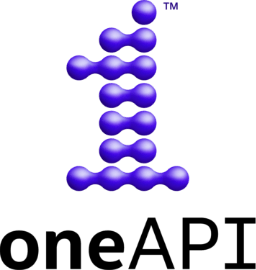In pursuit of energy efficiency: How Fujitsu and Arm are shaping AI’s tomorrow
We are witnessing the fastest industrial revolution of all time with Artificial Intelligence (AI) and high-performance computing (HPC) being the biggest enablers. Without a doubt, AI and HPC have become an unstoppable force permeating all aspects of our society. But, despite the unprecedented pace at which AI transforms every facet of human lives, its accessibility towards sustainable digital transformation remains a massive challenge with environmental costs and impact of AI systems too often being ignored.
Accommodating the demands of this new AI-powered world brings with it a raft of challenges. Take this for instance: whilst big large language models (LLMs) are top of mind for the industry today, they are also the biggest contributors to carbon emission, on account of large numbers of parameters in the models, increasing the power usage of data centers, as borne out by a Stanford University’s report.
Fujitsu, a global digital services company and Arm, a global leader in semiconductor design and silicon IP development, are focused on open collaboration with the international community for human-centered technological development and are working towards building easy-to-deploy solutions for diverse domains across the globe.
With the escalating need for power-efficient systems, FUJITSU-MONAKA in collaboration with Arm is aligned to enable the next-generation AI application development ecosystem through high-end energy efficient compute. The R&D efforts are focused towards enhancing various AI/Machine Learning (ML) and deep learning (DL) frameworks for Armv9-A architecture and Scalable Vector Extension 2 (SVE2) platforms. SVE2 emerges as a formidable solution for handling AI and HPC workloads by bringing significant speed improvements.
By using the widely adopted Armv9-A architecture, Fujitsu and Arm aim to work towards enabling developers to easily port and optimize their applications towards expanding the AI ecosystem and make it more accessible and affordable for various users and industries.
Architecting next generation data centers with sustainability at the core
Training AI models and systems places considerable demands on the underlying hardware, thus increasing energy consumption. Inefficient hardware support for running complex AI workloads not only impacts energy efficiency but also performance. One solution to this is building an underlying architecture and technology stack for data centers, enabling organizations to achieve the best performance with low energy consumption. This allows companies to sustainably meet the current and future demands of AI applications and reduce the toll on the environment.
With data centers being a vital infrastructure that underpin our AI ecosystem, the industry needs to architect a new approach to supercharge data center efficiency by amalgamating power efficient hardware and software ecosystems.
Fujitsu Ltd. is developing FUJITSU-MONAKA – a 2 nanometer Armv9-A architecture-based CPU slated to be launched in the financial year of 2027 focusing mainly on providing an energy efficient solution to meet the carbon neutrality goals for a green data center supercomputing facility. FUJITSU-MONAKA processor is set to provide energy-efficiency solution to Japan’s New Energy and Industrial Technology Development Organization (NEDO) program, which has launched an ambitious initiative to achieve energy savings of 40% or more in data centers in Japan by 2030.
Unlocking energy efficiency & performance begins with a collaborative approach
Arm and Fujitsu have a long history of collaboration on the design of the Scalable Vector Extensions (SVE) Architecture for the Arm v8-A architecture. The SVE design architecture supports a vector-length agnostic (VLA) programming model allowing the program to take advantage of wider and faster machines without the need for recompilation.
Fujitsu was the first silicon partner of Arm to implement the SVE architecture on the Fujitsu-A64FX CPU that powered the Supercomputer Fugaku, jointly developed by RIKEN and Fujitsu. This laid the foundation for Arm to develop the SVE2 architecture to accelerate Demand-Side Platform-like and AI/ML workloads in data center and edge compute.
Fujitsu designs its own microarchitecture – a formidable factor for CPU performance and power efficiency. This technology made it possible for Fugaku developed using Fujitsu-A64FX Arm-based CPU, to achieve the world’s highest levels of performance and energy efficiency.
While talking about Fujitsu’s close collaboration with the Arm team, Dr. Priyanka Sharma, Director of Software Engineering at Fujitsu Research of India Private Limited (FRIPL), who is leading the MONAKA Software R&D Unit, said: “Fujitsu has a strong legacy of contributing towards the Arm ecosystem and we have extensively contributed towards building the Arm software stack. Through FUJITSU-MONAKA, we are committed to taking our association further to push our developments in the high-performance computing domain to the open source community and work towards building a unified development ecosystem that plays a vital role in advancing the creation of cross-platform software and accelerators. The MONAKA HPC R&D Unit in India is actively collaborating with the Arm team towards co-development of various software level enablement/tuning efforts to enable various ML/DL stack for Arm. The co-development with the Arm team has been a great working association and gives quite the feel of working towards the global community in building an open ecosystem for democratizing the use of AI.”
Shaping a better tomorrow with a ‘Software just works’ mantra
Arm actively collaborates with technology companies to develop various open system standards to ensure that system software ‘just works on Arm.’ This avoids software fragmentation, ensures interoperability of system IP, and reduces time-to-market for the Arm ecosystem.
Aparajita Bhattacharya, Senior Director, Engineering Architecture and Technology at Arm shares, “My role in Arm is leading an engineering & technology organization that enables the software to ‘just work’. We worked closely with Fujitsu to enable them to achieve compliance for their Arm-based Fujitsu-A64FX CPU. During this collaboration, Arm teams worked hand-in-hand with Fujitsu’s engineering and leadership teams to better understand Fujitsu’s validation environments and collaborate with them to achieve architecture compliance on their systems. The deep dives into technical details and requests for capabilities, has led to enhancements in Arm’s compliance products. Our team has experienced first-hand the detail oriented, quality focused, and deeply courteous Japanese culture.”
Cross-industry collaboration is the key to innovation
By working collectively towards an energy-efficient future, companies can foster innovation and growth. To deliver on this shared vision of open, flexible, and interoperable AI and HPC systems for an increasingly digitized business environment, technology leaders such as Fujitsu and Arm are driving innovation by maximizing the usefulness of backend compute that delivers on the promise of sustainable digital transformation. The next-generation Data Centre CPU FUJITSU-MONAKA can handle diverse and demanding workloads, enabling businesses to meet performance needs while lowering energy usage, and supporting the goal of a sustainable future.
We are also witnessing improved collaboration within the ecosystem. In a bid to drive cross-industry collaboration, the Linux Foundation announced the formation of the Unified Acceleration (UXL) Foundation, a cross-industry group committed to delivering an open standard accelerator programming model that simplifies development of performant, cross-platform applications in September 2023 during the OSS Summit. Both Arm and Fujitsu are members of the UXL Foundation that is focused on building a unified development ecosystem and plays a vital role in advancing the creation of cross-platform software and accelerators.
Additionally, Arm and Fujitsu are also key members of Linaro that fosters the goal of spreading and evangelizing Arm ecosystem across industries by leveraging Arm open source software. Fujitsu’s collaboration with Linaro began around 2019 for device drivers and the partnership has continued over the years with Fujitsu contributing to CI/CD pipeline and compiler toolchain.
Acknowledgements
This article is based on results obtained from a project subsidized by the New Energy and Industrial Technology Development Organization (NEDO).

